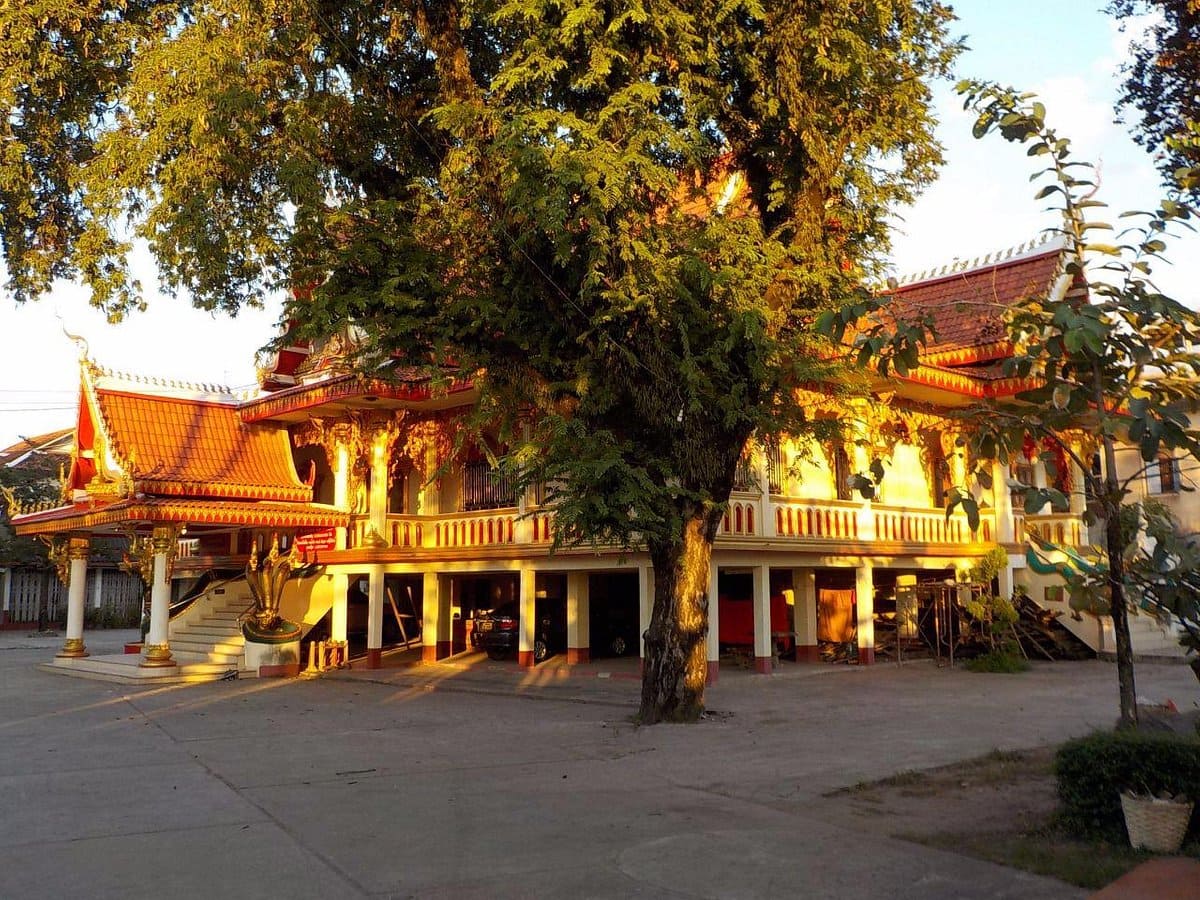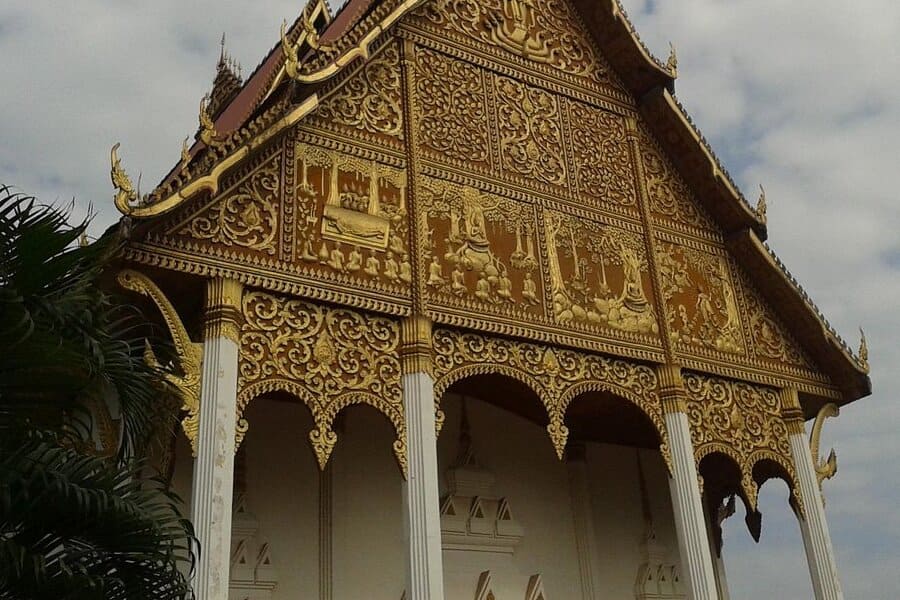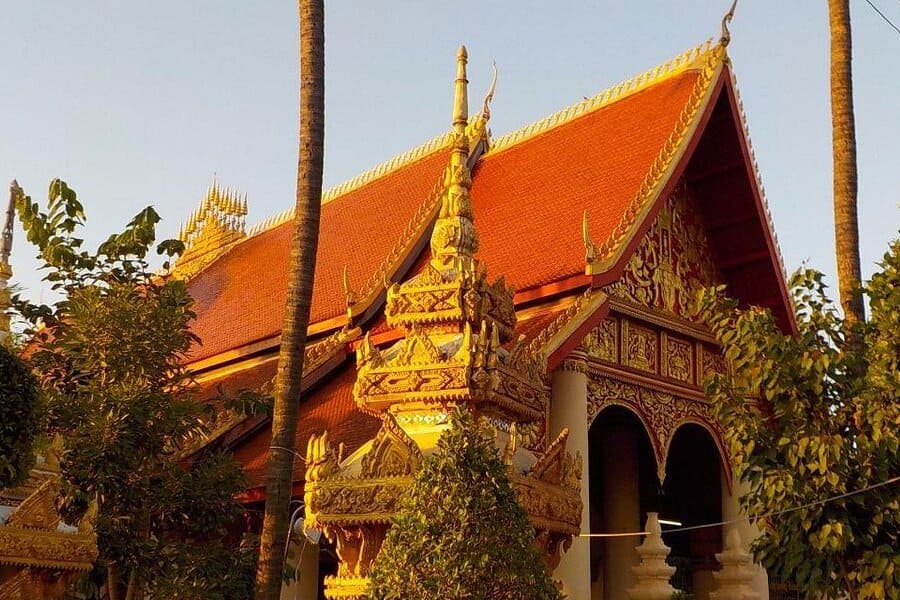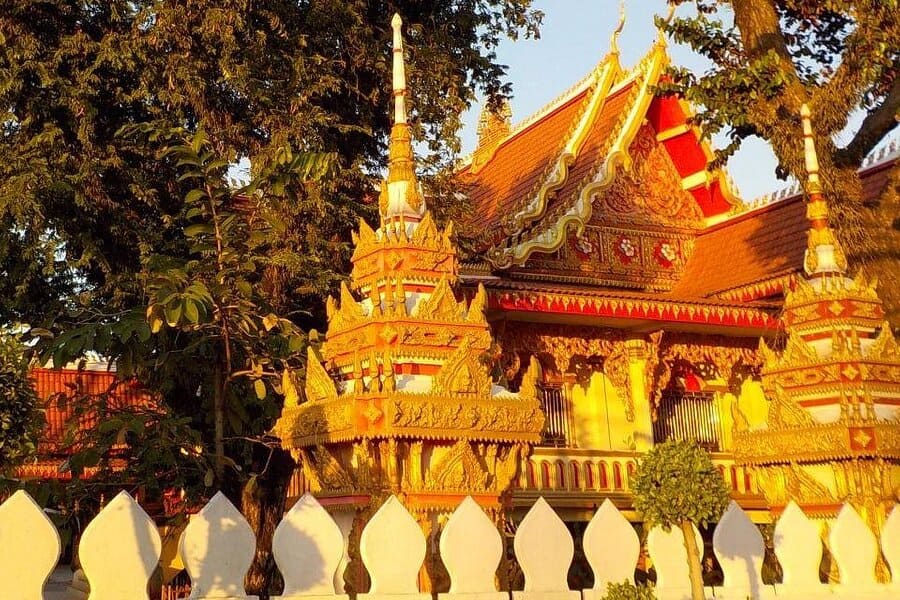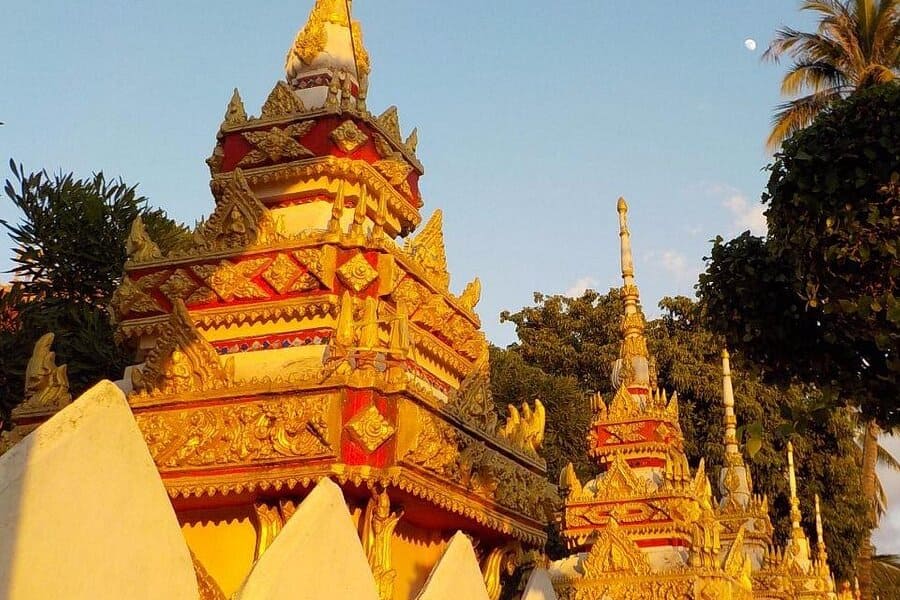Discover the enchanting allure of Laos with a captivating addition to your laos tour package: Wat Chan, a historical wooden temple nestled in the heart of Vientiane. This architectural gem embodies the rich cultural heritage and intricate craftsmanship of Laos, inviting travelers to immerse themselves in centuries-old traditions and spirituality. As you embark on your journey through the serene streets of Vientiane, allow Wat Chan to unveil its timeless beauty and profound significance, offering a glimpse into the soul of this captivating destination.
The History of Wat Chan temple
The history of Wat Chan temple is steeped in legend and lore, dating back centuries to the founding days of Vientiane, the capital city of Laos. According to local folklore, Wat Chan is believed to have been established during the reign of King Setthathirath, a revered monarch who played a pivotal role in shaping the history and culture of Laos during the 16th century.
Originally constructed as a modest wooden structure, Wat Chan served as a place of worship and spiritual retreat for Buddhist monks and devotees alike. Over the years, the temple underwent several renovations and expansions, reflecting the evolving architectural styles and religious practices of the time.
During the tumultuous periods of Laos' history, including invasions and conflicts, Wat Chan temple bore witness to significant events that shaped the destiny of the nation. Despite facing adversity and challenges, the temple endured as a symbol of resilience and faith, remaining a beacon of hope and inspiration for the local community.
Throughout its storied past, Wat Chan temple has been a center of religious and cultural significance, hosting ceremonies, festivals, and rituals that celebrate the teachings of Buddhism and honor the memory of past generations. The temple's ornate wooden structures and intricate carvings bear testament to the craftsmanship and artistic talent of Lao artisans, preserving a legacy of craftsmanship and creativity that continues to inspire visitors from around the world.
Today, Wat Chan temple stands as a cherished cultural landmark and spiritual sanctuary in Vientiane, offering visitors a glimpse into Laos' rich history and heritage. As travelers explore its hallowed halls and sacred grounds, they are invited to embark on a journey through time, uncovering the secrets and stories that lie within the ancient wooden walls of this venerable temple.
The Architecture of Wat Chan temple
The architecture of Wat Chan temple is a masterpiece of traditional Lao craftsmanship, characterized by its elegant wooden structures, intricate carvings, and ornate details. Situated in the heart of Vientiane, the capital city of Laos, Wat Chan showcases the unique architectural style that is emblematic of Lao Buddhist temples.
At the heart of Wat Chan temple is its main hall, or "sim," which serves as the central place of worship and meditation for Buddhist monks and devotees. The sim is typically constructed of wood, with a multi-tiered roof adorned with decorative elements such as naga serpents, lotus petals, and mythical creatures. The steeply pitched roof is a distinctive feature of Lao temple architecture, symbolizing the aspiration to reach the heavens.
The exterior walls of the sim are often embellished with intricate wooden carvings depicting scenes from Buddhist mythology, local folklore, and historical events. These carvings are meticulously crafted by skilled artisans, showcasing the rich artistic heritage of Laos and serving as a visual expression of Buddhist teachings and values.
Surrounding the main hall are smaller structures and pavilions, including meditation halls, libraries, and monk's quarters, all constructed in the traditional Lao architectural style. These buildings are interconnected by covered walkways and open courtyards, creating a harmonious layout that encourages contemplation and reflection.
One of the most striking features of Wat Chan temple is its wooden pillars, which support the weight of the roof and are intricately carved with elaborate motifs and symbols. These pillars are often adorned with gold leaf and colorful paint, adding to the temple's visual appeal and spiritual significance.
Wat Chan temple Tour Guide
Opening hour
5:00 am-8:00 pm every day
Entrance fee
Admission is free
Means of transportation to Wat Chan temple
To reach Wat Chan temple in Laos, you can utilize various means of transportation depending on your location and preferences:
- Tuk-tuk: Tuk-tuks are a popular and convenient mode of transportation in Laos. You can easily hail a tuk-tuk from your accommodation or along the streets of Vientiane to take you directly to Wat Chan temple.
- Bicycle: Renting a bicycle is a great way to explore Vientiane at your own pace. You can cycle to Wat Chan temple, enjoying the sights and sounds of the city along the way. Many accommodations offer bicycle rentals to guests.
- Motorbike: If you're comfortable riding a motorbike, you can rent one from rental agencies or your accommodation and navigate the streets of Vientiane to reach Wat Chan temple. Make sure to wear a helmet and follow traffic regulations.
- Taxi: Taxis are available in Vientiane and can be hired to take you to Wat Chan temple. You can either flag down a taxi on the street or arrange for one through your accommodation. Ensure that the driver is familiar with the location of Wat Chan temple before starting your journey.
- Walking: If you're staying in the central area of Vientiane, you may opt to walk to Wat Chan temple. While it may take longer, walking allows you to soak in the atmosphere of the city and discover hidden gems along the way.
Join a guided tour to explore the temple's ornate architecture, learn about its storied past, and immerse yourself in the spiritual ambiance of this cultural treasure. Whether you're a history buff, architecture enthusiast, or simply seeking a deeper understanding of Laos' cultural heritage, Wat Chan promises an enlightening and unforgettable experience for travelers exploring Vientiane.


